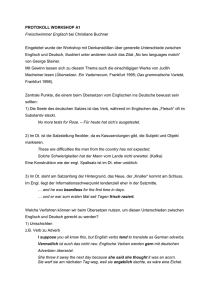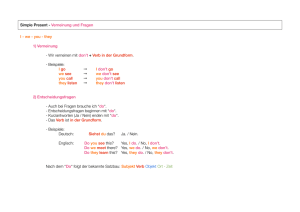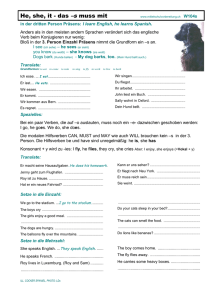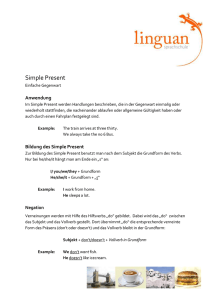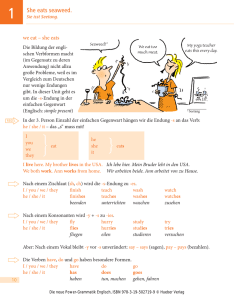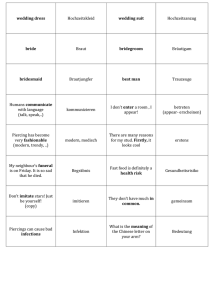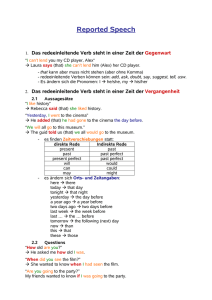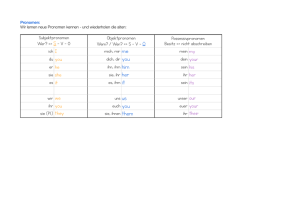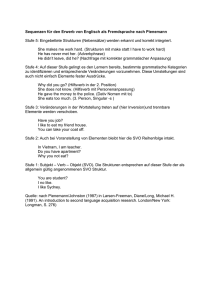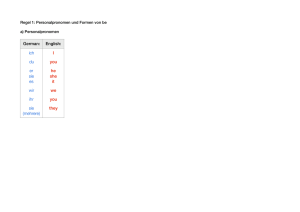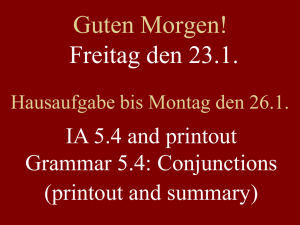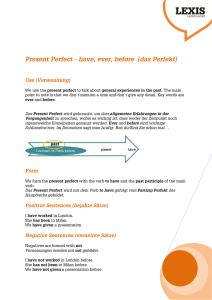SIMPLE PRESENT or PRESENT SIMPLE - Lo-net2
Werbung
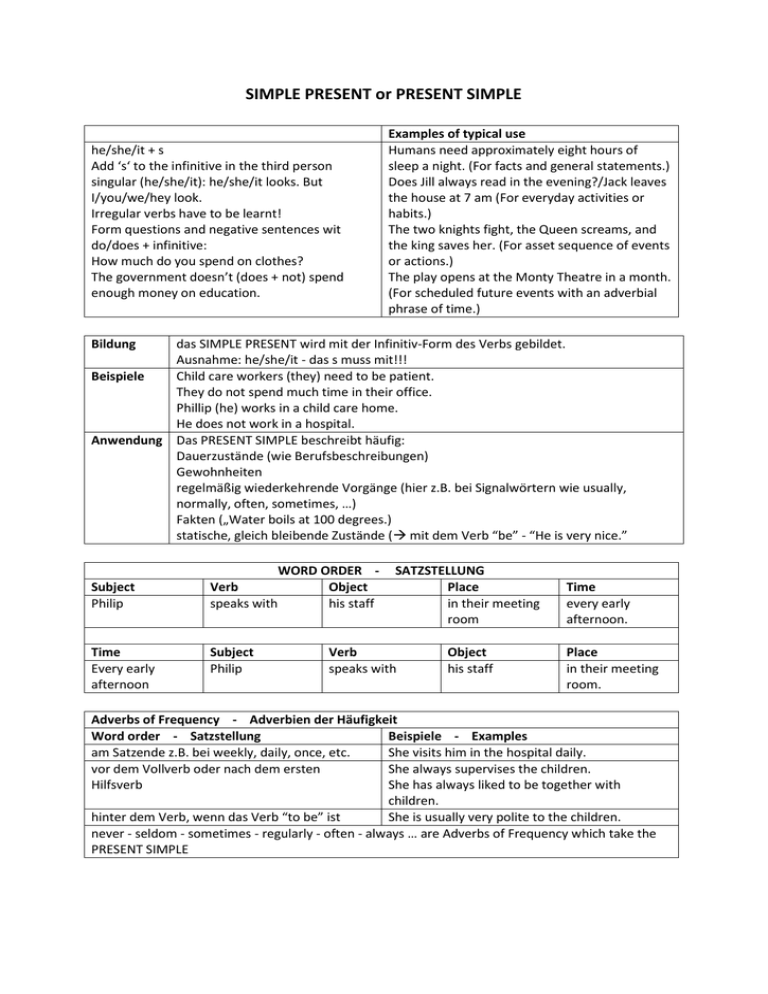
SIMPLE PRESENT or PRESENT SIMPLE he/she/it + s Add ‘s‘ to the infinitive in the third person singular (he/she/it): he/she/it looks. But I/you/we/hey look. Irregular verbs have to be learnt! Form questions and negative sentences wit do/does + infinitive: How much do you spend on clothes? The government doesn’t (does + not) spend enough money on education. Examples of typical use Humans need approximately eight hours of sleep a night. (For facts and general statements.) Does Jill always read in the evening?/Jack leaves the house at 7 am (For everyday activities or habits.) The two knights fight, the Queen screams, and the king saves her. (For asset sequence of events or actions.) The play opens at the Monty Theatre in a month. (For scheduled future events with an adverbial phrase of time.) Bildung das SIMPLE PRESENT wird mit der Infinitiv-Form des Verbs gebildet. Ausnahme: he/she/it - das s muss mit!!! Beispiele Child care workers (they) need to be patient. They do not spend much time in their office. Phillip (he) works in a child care home. He does not work in a hospital. Anwendung Das PRESENT SIMPLE beschreibt häufig: Dauerzustände (wie Berufsbeschreibungen) Gewohnheiten regelmäßig wiederkehrende Vorgänge (hier z.B. bei Signalwörtern wie usually, normally, often, sometimes, …) Fakten („Water boils at 100 degrees.) statische, gleich bleibende Zustände ( mit dem Verb “be” - “He is very nice.” Subject Philip Time Every early afternoon WORD ORDER Verb Object speaks with his staff Subject Philip SATZSTELLUNG Place in their meeting room Verb speaks with Object his staff Time every early afternoon. Place in their meeting room. Adverbs of Frequency - Adverbien der Häufigkeit Word order - Satzstellung Beispiele - Examples am Satzende z.B. bei weekly, daily, once, etc. She visits him in the hospital daily. vor dem Vollverb oder nach dem ersten She always supervises the children. Hilfsverb She has always liked to be together with children. hinter dem Verb, wenn das Verb “to be” ist She is usually very polite to the children. never - seldom - sometimes - regularly - often - always … are Adverbs of Frequency which take the PRESENT SIMPLE Present Tense Simple Bejahter Satz I go to school. You go ... He goes ... She goes ... It goes ... We go ... You go ... They go ... Verneinter Satz I don’t go to school. You don’t go ... He doesn’t go ... She doesn’t go ... It doesn’t go ... We don’t go ... You don’t go ... They don’t go ... Fragesatz Do I go to school? Do you go ...? Does he go ...? Does she go ...? Does it go ..? Do we go ...? Do you go ...? Do they go ...? Bildung Bei Verben, die auf einem Zischlaut oder auf „o“ enden, wird bei he/she/it „es“ angehängt. She finishes her homework. John watches TV. Mary still goes to school. “y” am Ende eines Verbs wird bei he/she/it zu “ie” wenn nicht “a, e, i, o, u” vorausgehen Peter copies the newspaper article for us. Mary always hurries down the street to catch her bus. Formen von „be“ I am/ I`m / I’m not good at English. You are/ aren’t ... He/she/it is / isn’t ... We are / aren’t ... You are / aren’t ... They are / aren’t ... “have” wird in der dritten Person zu “has” We have got a house but my uncle John who is single has got a flat.
